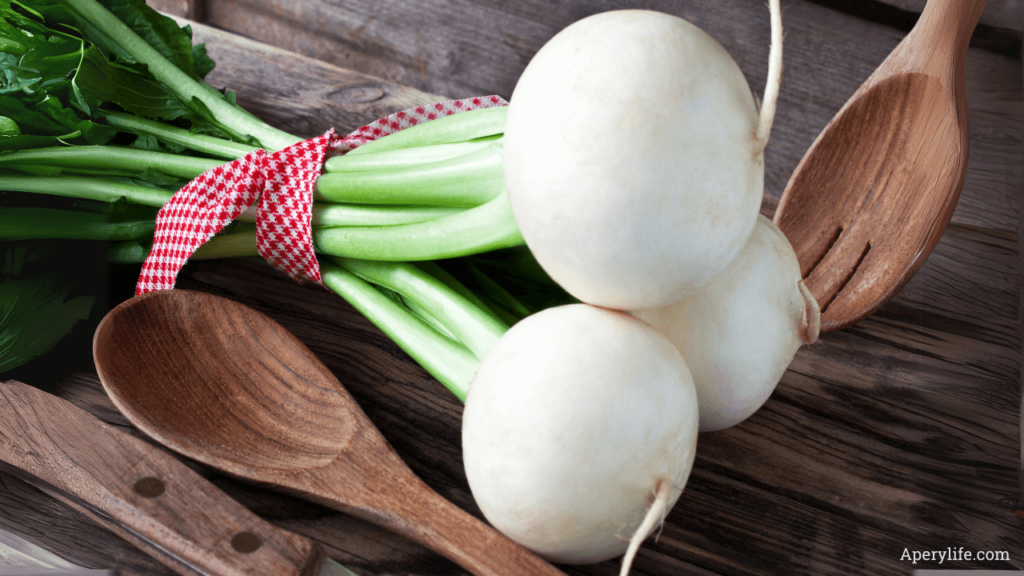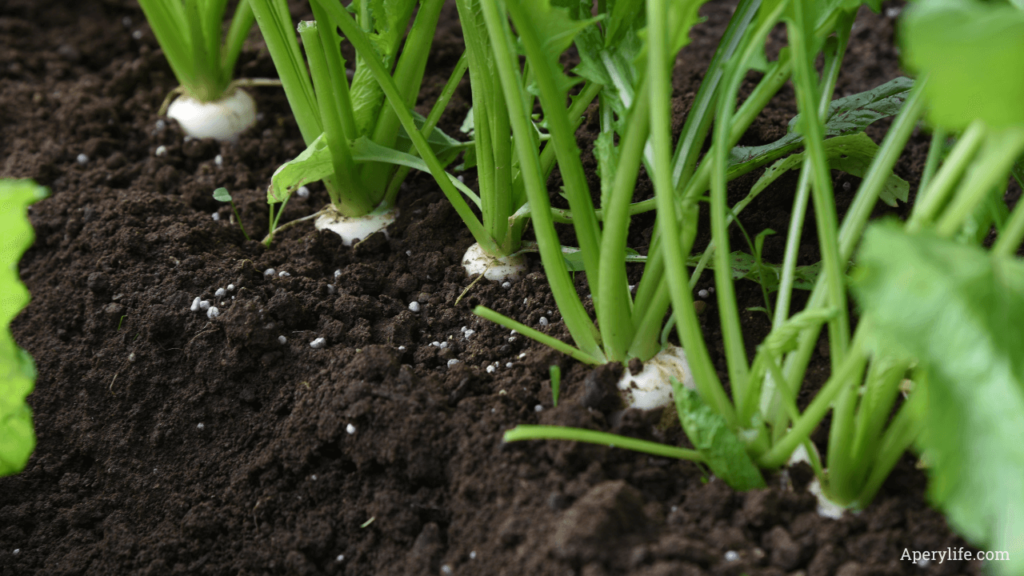Introduction
The white turnip (Brassica rapa) is a versatile and ancient vegetable, widely cultivated and consumed worldwide. Known for its slightly tangy flavor and crunchy texture, the white turnip is appreciated not only in cooking but also for its numerous health benefits. Perfect for soups, side dishes, and salads, the white turnip is an ingredient that brings tradition and modernity to the table.
Characteristics of the White Turnip
The white turnip is characterized by:
- Appearance: A round or slightly flattened root with smooth skin, white in color with purple tinges.
- Flesh: White, firm, and crunchy, with a slightly sweet and peppery taste.
- Leaves: The leaves are also edible and nutrient-rich, often used in soups or sautéed dishes.
- Varieties: The white turnip includes several sub-varieties that may vary slightly in shape and size.
Nutritional Properties and Health Benefits
The white turnip is a low-calorie food but rich in essential nutrients, including:
- Vitamins: Contains vitamin C, essential for the immune system, and B vitamins, helpful for metabolism.
- Minerals: Rich in calcium, potassium, and magnesium, supporting bone health and nervous system function.
- Antioxidants: Contains phytochemicals that help fight free radicals and prevent cellular aging.
- Fiber: Promotes digestion and helps maintain a feeling of fullness.
- Low Glycemic Index: Ideal for those needing to manage blood sugar levels.

Culinary Uses
The white turnip is an extremely versatile ingredient suitable for various preparations:
- Raw: Perfect for crunchy salads, sliced thin and dressed with oil and lemon.
- Cooked: Excellent boiled, steamed, or roasted to enhance its natural sweetness.
- Soups and Stews: Adds body and flavor to pureed soups and stews.
- Purees: Can be used to prepare delicate purees, even mixed with potatoes.
- Leaves: Sautéed with garlic and oil, they make a tasty and nutritious side dish.
- Pickled: White turnips can be pickled for a unique flavor and extended shelf life.
How to Grow White Turnips
Growing white turnips is simple and suitable even for small spaces:
- Climate and Soil: Thrives in cool, temperate climates, preferring well-drained soil rich in organic matter.
- Sowing: Done in spring or early autumn, planting seeds at a depth of about 1-2 cm.
- Watering: Requires regular watering, keeping the soil moist but avoiding waterlogging.
- Plant Care: Needs weeding to eliminate competition and encourage growth.
- Harvesting: Roots are harvested when still young and tender, generally 6-8 weeks after sowing.

Fun Facts About the White Turnip
- Ancient Origin: White turnips were known and cultivated by the ancient Romans, who appreciated their taste and medicinal properties.
- Symbol of Humility: For centuries, white turnips were considered a humble food, but today they are valued for their nutritional content.
- Sustainability: A low-impact crop that requires minimal resources to grow.
- Traditional Uses: In some Italian regions, white turnips are used to prepare traditional dishes like “purea di rape” (turnip puree) or “cavatielli con le cime di rapa” (pasta with turnip greens).
Precautions
Despite its numerous benefits, it is important to:
- Moderation: Consume in moderation if you have thyroid issues, as white turnips contain goitrogens that may interfere with thyroid function.
- Storage: Store in a cool, dry place away from direct light to preserve freshness and flavor.
- Cleaning: Wash thoroughly before use to remove any soil residues.
Conclusion
The white turnip is a simple yet virtuous food, perfect for enriching your diet with flavor and health. Whether featured in traditional dishes or reimagined in modern recipes, this vegetable is a sustainable and nutritious choice for any occasion.
All rights reserved © Copyright Aperylife.com